- Home
- Prelims
- Mains
- Current Affairs
- Study Materials
- Test Series
 EDITORIALS & ARTICLES
EDITORIALS & ARTICLES
Feb 17, 2022
POWER SECRETARY: ‘PREPAID METERING SOLUTION FOR BANE OF BILLING AND COLLECTION … GOOD FOR DISCOMS, CONSUMERS’
Prepaid smart meters can play an important role in addressing the issue of billing and collection in power distribution, said Power Secretary Alok Kumar.
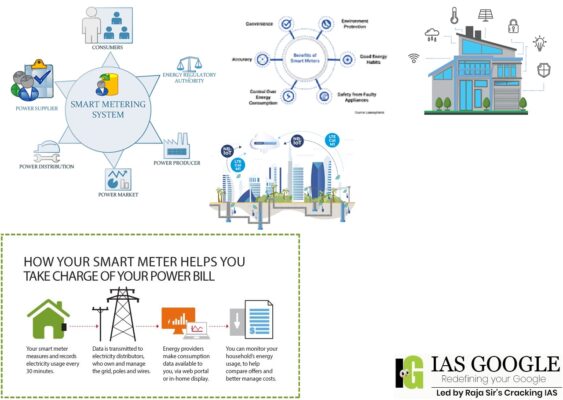 Smart Metering?
Smart Metering?
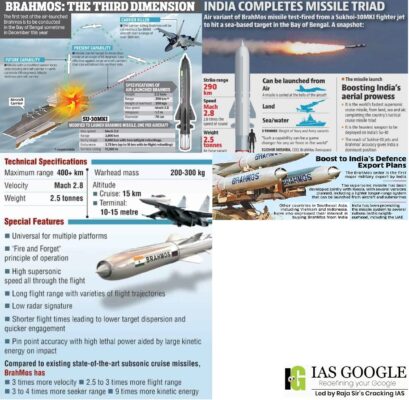
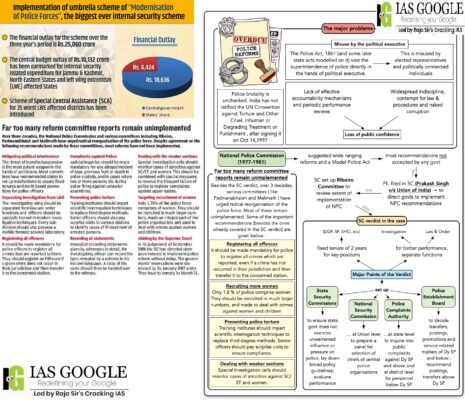

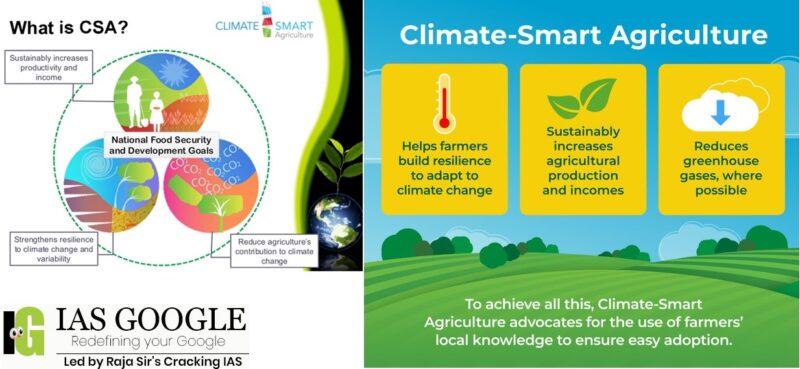

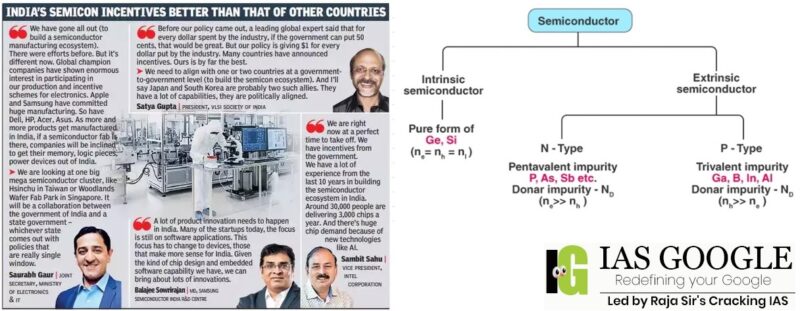

- He also said the ministries of power, coal and railways were actively working towards boosting coal supply, and that power generation companies, or gencos, were unlikely to face the issue of low coal inventory post monsoon in 2022.
 Smart Metering?
Smart Metering?
- A smart meter provides the objective tracking of utility energy consumption that occurs on the system or outlet it is attached to.
- For example, a smart meter connected to a natural gas line tracks the number of terms consumed by the facility.
- The "smart" feature of the meter lets it control the flow of the resources being used, such as natural gas, water or electricity.
- The smart aspect also allows the meter to be controlled remotely.
- It will keep track of how much energy they're using so they can adjust their usage if necessary.
- Smart meters record a variety of data points on consumption, including when a resource is being used, how much is being used at a time and where it's being directed.
- Through an internet or wireless connection, the data is relayed to a console, where you can see a breakdown of the data.
- It is an efficient method of tracking usage across their customer bases to better determine costs and infrastructure needs.
- It provides comfort to enhance learning conditions and improve environmental literacy.
- They present some cybersecurity risks.
- The management of the physical meters is, in itself, not a small undertaking and a supply chain application needs to be utilized.
- Consumers need to feel that they are being treated uniquely, which is difficult to do within such huge programs.
- Improper resource optimization, for example, during initial investigations when engineers arrive at a site and suggest that a different skill-set may be required to complete the work.
- Smart metering is improved by new and better connectivity innovations, especially IoT. With meters tied to the mechanisms that control the resources they're measuring; we can turn some of our decisions over to automation backed by machine learning.
- An IBM blog suggests that a smart meter tied to a thermostat can help it determine times to change the heat based on fluctuating energy costs. Smart meters can be applied to numerous devices and machinery, allowing businesses to manage their power usage per machine.
- Another potential application is for devices that use up consumable resources that need to be refilled. Smart meters that detect that a resource is about to run out can prompt an IoT device to automatically order a refill.

- According to the Philippines Defence Secretary, Delfin Lorenzana, they had sent a written request to the BrahMos Aerospace Private Limited “to accept a proposal to buy three batteries of the supersonic missile system for $375 million”.
- An agreement was signed by India and Russia to design, develop, manufacture and market a Supersonic Cruise Missile System in 1998. By 2006, it had been successfully accomplished.
- It can be launched from submarines, ships, aircraft or land.
- The acronym BrahMos is perceived as the two rivers- the Brahmaputra of India and the Moskva of Russia.
- It is a two-stage (solid propellant engine in the first stage and liquid ramjet in second) missile.
- It operates on the "Fire and Forgets" principle i.e., it does not require further guidance after launch.
- Brahmos is one of the fastest cruise missiles currently operationally deployed with a speed of Mach 2.8, which is nearly 3 times more than the speed of sound.
- China has rapidly expanded its defence and military capabilities which has made the Southeast Asian claimant countries very vulnerable.
- This has forced them to reach out to like-minded countries like India for further strengthening the bilateral ties especially in the realm of defence.
- The defence relations of importer countries have also been on an upward trajectory with India.
- India to ensure its place as a reliable defence partner to its Southeast Asian neighbours.
- India is engaging in “proactive defence diplomacy” in response to China’s naval incursions in the Indo-Pacific and also China’s encroachments in the disputed land border with India.
- The Indian government is looking to reduce its arms imports by boosting domestic production.
- Manila and Delhi are both engaged in active territorial disputes with Beijing, and both are (mostly) invested in rules-based order.
- The pace of high-level political and defense exchanges did begin to increase in the 1990s following the launch of India’s “Look East” policy, with head-of-state exchanges in 1991, 1997, 2006, and 2007.
- India’s relationships in East and Southeast Asia, gradually changing under a reinvigorated “Act East” policy.
- During a 2006 meeting between the two countries’ presidents, they signed a Memorandum of Understanding (MoU) on Defense and Security Cooperation and established several high-level commissions and dialogues.
- By the mid-2010s the two had established a Joint Commission on Bilateral Cooperation, a Joint Committee on Defense Cooperation, a new foreign policy consultations and security dialogue, and a joint working group on counterterrorism.
- India has been essentially known globally to be among the top five arms importers, according to a March 2021 report by the Stockholm International Peace Research Institute (SIPRI). But recently, New Delhi is seeking a boost in defence exports in order to strengthen its defence manufacturing and production.
- At present, India is the twenty-fourth largest arms exporter in the world, but India’s vision is “to expand its defence manufacturing sector and become a bigger arms exporter generating a revenue of $5 billion by 2025”.
- A delegation of six Sri Lankan armed forces officers was on a three-day visit to India as part of AAST from February 10 to 12.
- Both countries discussed agenda points focusing on key issues related to training, conduct of bilateral and multilateral exercises, enhancing relations in fields of arts, sports and cultural exchanges.
- AAST was organised by the Agnibaaz Division under the aegis of Headquarters, Southern Command of the Indian Army, with an aim to foster better coordination between the militaries of the two neighbours.
- The first edition of the talks was held back in 2011, and have since focused on defence cooperation, training, joint military exercises and exchanges in other areas between two countries who are neighbours in the strategically significant Indian Ocean Region (IOR).
- These annual talks, alternately held in India and Sri Lanka, also include guest delegations’ visits to various places of interest.
- The aim of AAST was to foster better coordination between the two militaries, with both countries discussing agenda points focusing on key issues.

- More than Rs 18,000 crore of this money will go towards security related expenditure in Jammu and Kashmir, Left Wing Extremism areas and the Northeast.
- The approval for the period 2021-22 to 2025-26, moves forward the initiative to modernise and improve the functioning of Police Forces of States and Union Territories.
- The scheme comprises all relevant sub-schemes that contribute to modernization and improvement.
- Under the five-year plan, provision has been made for internal security, law and order, adoption of modern technology by police, assisting states for narcotics control and strengthening the criminal justice system by developing a robust forensic set-up in the country.
- The scheme for modernization of state police forces has a Central outlay of Rs 4,846 crore.
- The approval includes central outlay of Rs 2,080 crore “to develop operationally independent and high-quality forensic sciences facilities in States/Union Territories for aiding scientific and timely investigation through modernization of resources”.
- Police’ and ‘law and order’ fall under the category of subjects within the domain of the State as per Entry 2 of List II of the VIIth Schedule in the Constitution of India.
- The Ministry of Home Affairs (MHA) has been supplementing the efforts and resources of the States, from time to time, by implementing the Scheme for Modernisation of State Police Forces (MPF Scheme) since 1969-70.

- Until now, only those higher education institutions that are at least six years old, or from where at least two batches of students have graduated, could apply for NAAC accreditation.
- These criteria, and the fact that not many institutions actually apply for review, had led to a situation where very few of the 51,000 colleges, universities and standalone institutions in the country possess NAAC grading.
- According to official data, as on October 26, 2021, the NAAC has issued 13,971 accreditations, which remain valid for five years. There are only 12 universities and 64 colleges that have been reviewed by the NAAC four times, with a gap of five years between each grading.
- Under the new guidelines, provisional accreditation for colleges (PAC) is essentially geared to ascertain the readiness of institutions for the final NAAC accreditation.
- Institutions that apply for the PAC process will get feedback regarding the areas they need to work on to reach “the threshold level of quality”, according to the manual.
- The PAC will be valid for two years, and institutions cannot get it more than two times.
- The National Education Policy (NEP) 2020 lays major emphasis on accreditation. It envisages a “meta-accrediting body” called the National Accreditation Council.
- According to the NEP, “Through a suitable system of graded accreditation and graded autonomy, and in a phased manner over a period of 15 years, all Higher Education Institutes in India will aim to become independent self-governing institutions pursuing innovation and excellence.”
- It was established in 1994 as an autonomous institution of the University Grants Commission (UGC) with its Head Quarter in Bengaluru.
- The mandate of NAAC as reflected in its vision statement is in making quality assurance an integral part of the functioning of Higher Education Institutions (HEIs).
- It conducts assessment and accreditation of Higher Educational Institutions (HEI) such as colleges, universities or other recognised institutions to derive an understanding of the ‘Quality Status’ of the institution.
- It evaluates the institutions for its conformance to the standards of quality in terms of its performance related to the educational processes and outcomes, curriculum coverage, teaching-learning processes, faculty, research, infrastructure, learning resources, organisation, governance, financial wellbeing and student services.
- It functions through its General Council (GC) and Executive Committee (EC) comprising educational administrators, policymakers and senior academicians from a cross-section of Indian higher education system.
- The Chairperson of the UGC is the President of the GC of the NAAC, the Chairperson of the EC is an eminent academician nominated by the President of GC (NAAC).

- The finance minister has made a few announcements in this context, including an additional allocation of Rs 19,500 crore for solar PV modules.
- She also talked of co-firing of 5-7 per cent of biomass pellets in thermal power plants, “sovereign green bonds” and a “battery-swapping policy”.
- India has kept away from the recent EU-US pledge to slash methane emissions by 30 per cent by 2030, despite the country being the world’s third largest emitter of methane.
- As per the national GHG inventory, the agriculture sector emits 408 MMT of carbon-dioxide equivalent and rice cultivation is the third highest source (17.5 per cent) of GHG emissions in Indian agriculture after enteric fermentation (54.6 per cent) and fertilizer use (19 per cent).
- The Economic Survey 2021-22 points out that the country is over-exploiting its ground water resource (see map), particularly in the northwest and some parts of south India.
- Climate-smart agriculture (CSA) is an approach that helps guide actions to transform agri-food systems towards green and climate resilient practices.
- CSA supports reaching internationally agreed goals such as the SDGs and the Paris Agreement.
- It aims to tackle three main objectives:
- sustainably increasing agricultural productivity and income;
- adapting and building resilience to climate change; and
- reducing and/or removing greenhouse gas emissions, where possible.
- CSA addresses climate change: Contrary to conventional agricultural development, CSA systematically integrates climate change into the planning and development of sustainable agricultural systems.
- CSA integrates multiple goals and manages trade-offs: Frequently, when it comes time to implement CSA, trade-offs must be made. This requires us to identify synergies and weigh the costs and benefits of different options based on stakeholder objectives identified through participatory approaches.
- CSA maintains ecosystems services: Ecosystems provide farmers with essential services, including clean air, water, food and materials. It is imperative that CSA interventions do not contribute to their degradation. Thus, CSA adopts a landscape approach that builds upon the principles of sustainable agriculture but goes beyond the narrow sectoral approaches that result in uncoordinated and competing land uses, to integrated planning and management.
- CSA has multiple entry points at different levels: CSA should not be perceived as a set of practices and technologies. It has multiple entry points, ranging from the development of technologies and practices to the elaboration of climate change models and scenarios, information technologies, insurance schemes, value chains and the strengthening of institutional and political enabling environments.
- CSA is context specific: Interventions must take into account how different elements interact at the landscape level, within or among ecosystems and as a part of different institutional arrangements and political realities. The fact that CSA often strives to reach multiple objectives at the system level makes it particularly difficult to transfer experiences from one context to another.
- CSA engages women and marginalised groups: To achieve food security goals and enhance resilience, CSA approaches must involve the poorest and most vulnerable groups. Gender is another central aspect of CSA. CSA strives to involve all local, regional and national stakeholders in decision-making.
- The budget speech as well as the Economic Survey 2021-22 recommended that priority should be given to crop diversification and allied sectors including horticulture, organic farming, dairying and fishing to increase farmers income.
- While the volume of credit has grown over the decades, its quality and impact on agriculture has deteriorated.
- Over the years, the growth rate in the agriculture sector has been falling: It was 6.8 per cent in 2016-17, whereas it is 3.9 per cent in 2021-22.
- Agricultural credit has become less efficient in delivering growth.
- In the last 10 years, agriculture credit increased by 350 per cent, but it has not reached even 15 per cent of the 12.56 crore small and marginal farmers.
- Institutional credit will help delink farmers from non-institutional sources, where they are compelled to borrow at usurious rates of interest.
- The RBI has asked if agricultural households with the lowest landholding (up to two hectares) get only about 15 per cent of the subsidised loan from institutional sources.
- The share is 79 per cent for households belonging to the highest size class of land possessed (above 2 hectares).
- As per the Situation Assessment Survey of Agricultural Households by NSSO, the share of institutional loans increases with an increase in land possessed.
- Clearly, the bulk of subsidised Agri-credit is grabbed by a handful of big farmers and agri-business companies.
- A loose definition of Agri-credit has led to the leakage of loans at subsidised rates to large Agri-firms.
- The flow of agricultural credit has not been uniformed across states.
- Institutional development across states is a priority area for equitable flow of subsidised credit.
- The state governments should work in close coordination with the banking system for the promotion of more Joint Liability Groups (JLGs) as per NABARD guidelines to ensure that formal credit reaches financially-excluded farmers.
- The state governments should regularly monitor credit flow.
- The rate of interest for long-term loans should be kept at 4 per cent.
- A comprehensive list of all farm-related activities should be prepared by the banks in consultation with NABARD, agriculture experts, farmers and administration.
- The eligibility conditions/criteria for providing agriculture loans should be further simplified and liberalised.
- The repayment schedule should be according to the farmers’ capacity.

- All 18 segments of the primary mirror on the James Webb Space Telescope seem to be working properly 1 1/2 months into the mission.
- The telescope’s first target was a bright star 258 light-years away in the constellation Ursa Major.
- The $10 billion infrared observatory considered the successor to the aging Hubble Space Telescope will seek light from the first stars and galaxies that formed in the universe nearly 14 billion years ago.
- It will also examine the atmospheres of alien worlds for any possible signs of life.
- It is a space telescope designed primarily to conduct infrared astronomy.
- The U.S. National Aeronautics and Space Administration (NASA) led development of the telescope in collaboration with the European Space Agency (ESA), and the Canadian Space Agency (CSA).
- The JWST was launched 25 December 2021 on an ESA Ariane 5 rocket from Kourou, French Guiana.
- It is intended to succeed the Hubble Space Telescope as NASA's flagship mission in astrophysics.
- The telescope is named after James E. Webb, who was the administrator of NASA from 1961 to 1968 during the Mercury, Gemini, and much of the Apollo programs.
- It provides improved infrared resolution and sensitivity over Hubble, viewing objects up to 100 times fainter than the faintest detectable by Hubble.
- The growth is driven by consumers increasingly opting for premium products despite the overall inflationary environment, price increase in all categories, and work from home due to restrictions for almost two quarters last year, industry executives said.
- While mobile phones, laptops, refrigerators, washing machines, air-conditioners, food processors, wearables and other accessories all sold more last year than 2019, television was the only category where 2021 sales were lower than 2019 by 3%.
- All categories, including television, posted robust growth over 2020, as per data from market intelligence firm GfK India.
- Computer sales in 2021 grew a whopping 87% from 2019 levels, while overall large appliances including refrigerators, air-conditioners and washing machines grew 10% over 2019, kitchen and small appliances grew by 13%, and overall mobile phone sales grew by 4%. Smartphone sales grew by 8%.
- In terms of volume sales, individual categories like air conditioner (8%), washing machine (13%), microwave oven (22%) grew in 2021over 2019 while refrigerator, television and smartphones still remained impacted by the pandemic and supply disruptions.

- The ministry plans to approve the application of at least one big global semiconductor fabrication company before March 31 and give the winning bidder 700-750 days to complete the construction of the new unit.
- In December 2021, the Cabinet had approved a Rs 76,000-crore plan for semiconductor and display manufacturing ecosystem in the country.
- As a part of the plan, the Centre has lined up incentive support for companies engaged in silicon semiconductor fabs, display fabs, compound semiconductors, silicon photonics, sensors fabs, semiconductor packaging and semiconductor design.
- As a part of the scheme, for setting up of silicon complementary metal oxide semiconductor, fabrication units that manufacture technology node of 28 nanometer (nm) or lower will get up to 50 per cent of the project cost as incentive, while for above 28 nm but up to 45 nm, the Centre will provide 40 per cent of the unit cost.
- The government’s move to incentivise the setting up of semiconductor fabrication units assumes significance at a time when there is a global shortage of semiconductor products and large chipmakers like Intel, TSMC, Texas Instruments, etc. are looking to add capacity.
- As per government estimates, electronic chips worth Rs 1.1 lakh crore were consumed in the country during 2020.

- The Indian Medical Association (IMA), the national representative platform of doctors of modern medicine, is yet to issue a statement on the proposal, but statements by individual doctors on social media suggest the medical community is divided in its opinion.
- The Hippocratic Oath is attributed to Hippocrates of the island of Kos, a Greek physician of the classical period (4th-5th centuries BC, until the death of Alexander the Great in 323 BC), broadly corresponding to the period from the death of the Buddha (486 BC) to the rise of the Maurya's (321 BC) in India.
- Among the great contemporaries of Hippocrates were the Athenian philosopher Plato and his teacher Socrates, and Plato’s student and Alexander’s tutor, the polymath Aristotle.
- The Corpus Hippocraticum is a collection of 70 books on medicine; however, most scholars agree that the Hippocratic Oath was probably not the work of the individual identified as the historical Hippocrates, the “father of modern medicine”.
- The oath seems rather to be “more Pythagorean (who lived a century or more before Hippocrates) in its moral and ethical flavour and it might have been enriched by other authors in antiquity”.
- There is no universally accepted version of the physician’s oath. Many medical schools around the world hold a ceremony in which graduating doctors swear to a broad charter of ethics that are sometimes customised by individual institutions. A version of the ‘physician’s code of ethics’ is commonly displayed in hospitals or clinics in most places, including India.
- The AMA describes its Code of Medical Ethics as a living document that has evolved as medicine and society have changed. The AMA’s Code was adopted in 1847, and underwent updates in 1903, 1949, 1957, and 2008.
- The World Medical Association (WMA) adopted an international code of medical ethics in 1949, which was amended in 1968, 1983, and 2006. In May last year, the WMA published a proposed modernised version of the international code, “outlining physicians’ duties towards their patients, other physicians, health professionals and society as a whole”.
- Like several other sages mentioned in the literature of ancient India, the historicity of Charaka is uncertain, and the compendium of medicine that carries his name is unlikely to have been the work of a single individual.
- The Charak Samhita is a medical pharmacopoeia and collection of commentaries and discussions on medical practices that dated to the 1st-2nd centuries AD.
- Along with the compendium of Sushruta (c. 4th century AD), which is about surgery, the Charak Samhita is considered the foundational text of ancient Indian medicine, which was an evolved system of understanding and treating disease that resembled that of Hippocrates and Galen (2nd century AD), and was in some ways ahead of the Greeks.
- The ancient Indian interest in physiology is understood to have drawn from yoga and mysticism, and to have been enriched by the growth and spread of Buddhism to new lands, the arrival of the first Christian missionaries, and the contact with Hellenic practitioners of medicine.
- In theory and praxis, ayurvedic medicine today remains broadly unchanged from these ancient Indian principles.
- At the heart of ancient Indian medicine is the doctrine of the three ‘doshas’ (humours).
- It was believed that a balance of the three vital fluids, wind, bile/ gall, and mucus/ phlegm is essential for good health — and that these humours were tied closely with the scheme of the three ‘gunas’ or universal qualities — virtue/ lucidity (sattva), passion/ energy (rajas), and dullness/ torpor (tamas). To the three primary humours, wind, bile, and phlegm, some authorities added a fourth, blood.
- The functions of the body are regulated by the five ‘winds’ or vayu — udana, which emanates from the throat and accounts for speech; prana, from the heart, responsible for breathing and swallowing; samana, in stomach, involved in digestion; apana, in the abdomen, ensuring excretion and procreation; and vyana, which causes the motion of blood.
- Food is seen as the key to good health: it is why the body exists — and as bad food causes sickness, good food heals.
- A passage from the Charak Samhita describes a debate among sages which concludes with the view, “The use of good food is one cause of the growth of a person, and the use of bad food is a cause of diseases” — even though the debate is not conclusively closed.
- Surgery reached great heights in ancient India. Basham noted that the caesarian section was known, bone-setting was highly evolved, and plastic surgery was “developed far beyond anything known elsewhere at the time”.









 Latest News
Latest News General Studies
General Studies